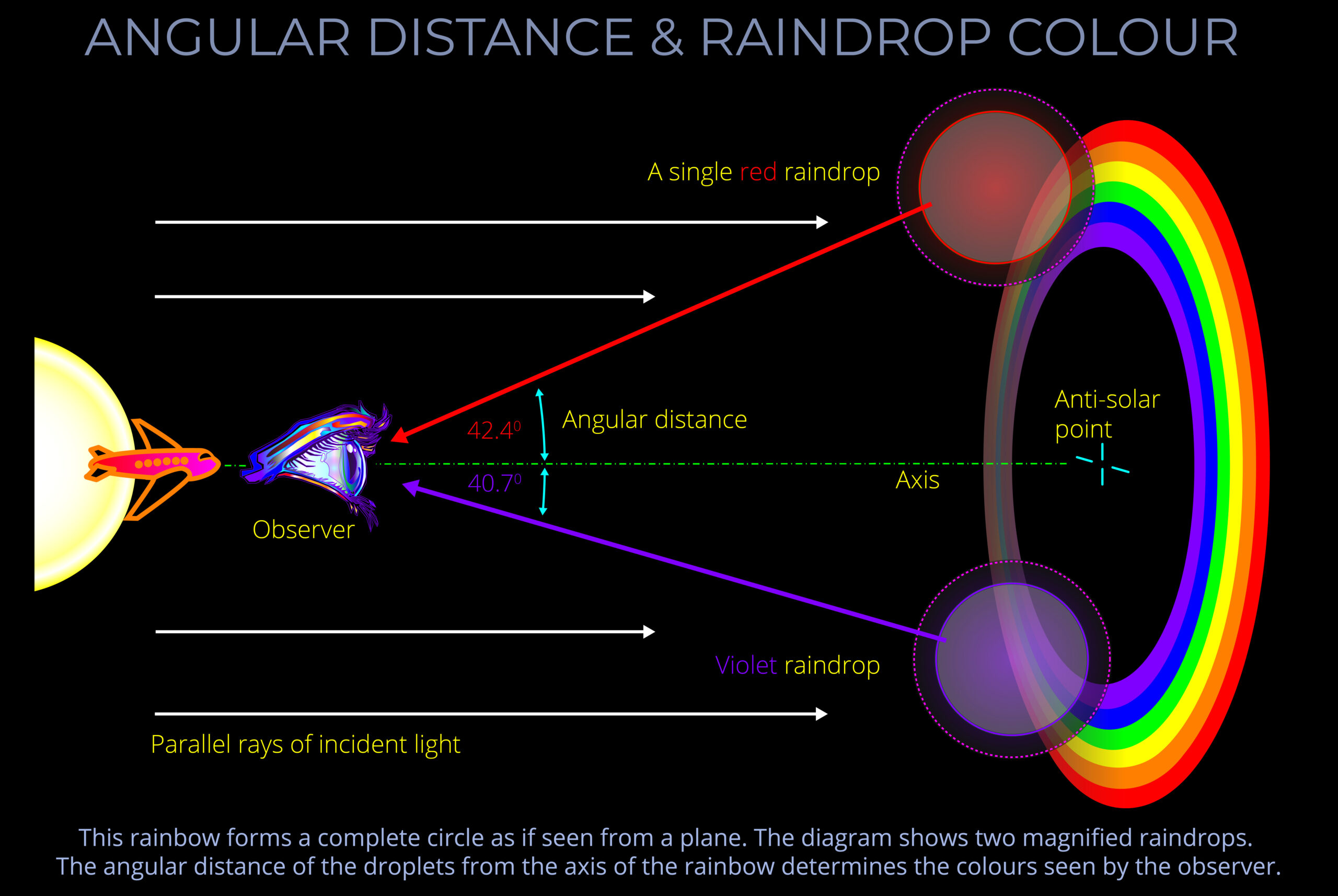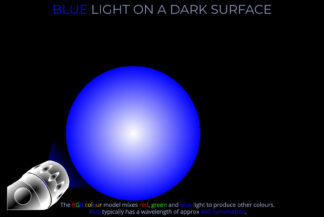Angular Distance & Raindrop Colour
£0.00
This is one of a set of almost 40 diagrams exploring Rainbows.
Each diagram appears on a separate page and is supported by a full explanation.
- Follow the links embedded in the text for definitions of all the key terms.
- For quick reference don’t miss the summaries of key terms further down each page.
Description
Angular Distance & Raindrop Colour
TRY SOME QUICK QUESTIONS AND ANSWERS TO GET STARTED
Yes! If droplets are large, 1 millimetre or more in diameter, red, green, and violet are bright but blue is hardly visible.
The red band of colour on a primary rainbow appears at an angular distance of 42.4 degrees from the centre of the bow.
Angular distance is the angle between the rainbow axis and the direction in which an observer must look to see the coloured arcs of a rainbow.
About the diagram
Overview of diagram
- Rainbows form when sunlight encounters a curtain of rain.
- The sunlight enters raindrops at one angle and then emerges at another.
- The water droplets have to be in just the right place to reflect coloured rays into an observer’s eyes.
- Each raindrop is made of liquid water and acts as a tiny prism.
- Raindrops breaks down sunlight into spectral colours, so into red, orange, yellow, green, blue and violet.
- The visible spectrum is composed of wavelengths between approximately 380 and 740 nanometres and each corresponds with a different colour.
- Although we recognise the rainbow colours ROYGBV there is a colour corresponding with each and every wavelength.
- Each droplet of rain can only direct one colour towards an observer’s eyes. All the other colours exit at the wrong angle and go off in other directions.
- Rainbows are described as being both atmospheric and optical phenomena.
About the diagram
- This diagram shows an observer looking towards the anti-solar point at the centre of a rainbow.
- The rainbow forms a complete circle as if seen from a plane.
- A rainbow only forms a complete circle when the ground around an observer doesn’t get in the way.
- Normally, a rainbow produced by sunlight is reduced from a circle to a semi-circle or an arc.
- The diagram shows two raindrops, one is above (red) and one is below (violet) the rainbow’s axis.
- Both the raindrops are of a similar size and shape and are within a curtain of rain falling across the observer’s field of view.
- It is the difference in angular distance from the axis that determines their colour.
- As raindrops that are in the right position at the right moment pass an elevation of 42.20 from the axis they appear red. As their angular distance decreases, they appear orange then yellow, green, blue and finally at 400, violet.
- Once the angular distance drops below 400 raindrops don’t contribute colour to a rainbow.
- Each colour of visible light corresponds with a different wavelength but instead of seeing a smooth and continuous range of colours the observer can see distinct bands of colour.
The angle between incident and refracted rays
- The angle between incident and refracted rays is often called the angular distance. Angular distance is usually measured between the axis and the elevation of coloured raindrops as seen by an observer.
- Angular distance can also be measured using the angle between the path of an incident ray of light before it strikes a raindrop and its path after it leaves the raindrop and is approaching the observer. See our diagram The Path of a Red Ray Through a Raindrop for more details.
- For convenience and consistency angular distance is often shown in rainbow diagrams measured between the axis and the top of the rainbow as seen by an observer. In reality the angular distance for any colour is the same at every position on the arc or entire circumference of a rainbow.
Some key terms
No posts found.



